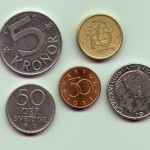Yesterday’s trade saw USD/CAD within the range of 1.3935-1.4082. The pair closed at 1.4067, surging 0.86% on a daily basis. It has been the 13th gain in the past 21 trading days and also the sharpest one since January 25th, when it advanced 1.23%.
At 9:24 GMT today USD/CAD was losing 0.32% for the day to trade at 1.4023. The pair touched a daily low at 1.4011 at 9:12 GMT and a daily high at 1.4103 during mid-Asian trading session.
Canada’s dollar has paired its recent gains, as crude oil prices fell for a second straight day on February 2nd. Oil futures for March delivery went down as low as $29.57 per barrel on February 2nd and closed at a level of $29.63 to mark their 17th drop in the past 33 trading days. As of 9:31 GMT today the commodity was up 2.35% on a daily basis to trade at $30.33 per barrel, after going up as high as $30.60 earlier. Oil has fallen 9.89% so far during the current month.
On Wednesday USD/CAD trading may be influenced by the following macroeconomic reports as listed below.
Fundamentals
United States
Change in employment by ADP
Employers in the US non-farm private sector probably added 195 000 new jobs during January, according to the median estimate by experts, following 257 000 new positions added in December. The latter has been the largest gain in jobs since June 2014, when 281 000 positions were added. The employment report by Automated Data Processing Inc. (ADP) is based on data that encompasses 400 000 – 500 000 companies employing over 24 million people, working in the 19 major sectors of the economy. The ADP employment change indicator is calculated in accordance with the same methodology, which the Bureau of Labor Statistics (BLS) uses. Published two days ahead of the governments employment statistics, this report is used by traders as a reliable predictor of the official non-farm payrolls data. Creation of jobs has a direct link to consumer spending, while the latter is a major driving force behind the US economic growth. Therefore, in case new jobs growth came above expectations, this would have a moderate-to-strong bullish effect on the US dollar. The official figure is scheduled to be released at 13:15 GMT.
Services PMI by Markit – final reading
The final Services Purchasing Managers Index probably confirmed the preliminary value for January at 53.7, reported on January 26th. If so, this would be the lowest index reading since December 2014, when the PMI was reported at a final 53.3. In December 2015 the final seasonally adjusted index stood at 54.3, improving from a preliminary reading of 53.7. Values above the key level of 50.0 indicate optimism (expanding activity). In case, however, a larger-than-projected slowdown in services sector activity was reported, this would have a moderate bearish effect on the US dollar. The final report by Markit Economics is due out at 14:45 GMT.
Non-Manufacturing PMI by the ISM
Activity in United States’ sector of services probably increased at a slower pace in January, with the corresponding non-manufacturing PMI coming in at a reading of 55.1, according to the median forecast by experts, down from a revised up level of 55.8 in December (55.3 previously). If so, Januarys PMI reading would be the lowest one since March 2014, when a level of 53.1 was reported. January would also be the 73rd consecutive month, when the gauge stood in the area above 50.0. The PMI is a compound index, based on the values of four equally-weighted components, which comprise it. These sub-indexes reflect seasonally adjusted new orders, seasonally adjusted employment, seasonally adjusted business activity and supplier deliveries.
The New Orders Index stood at 58.2 in December, up from a reading of 57.5 in the prior month. The Employment Index advanced to 55.7 in December from 55.0 in November, while marking growth for the 22nd month in a row, according to data by the Institute for Supply Management (ISM). The Prices Index fell to 50.3 in December from 49.7 in November, which indicated prices declined in December for a third time in the past four months. The Non-Manufacturing Business Activity Index advanced to 58.7 in December from 58.2 in November, indicating growth for a 77th straight month.
Among the 17 services industries, 11 reported growth, 5 reported contraction and 1 reported no change in activity in December.
In case activity in US services slowed down more than anticipated in January, this would have a moderate-to-strong bearish effect on the US dollar. The ISM is to release the official data at 15:00 GMT.
Daily and Weekly Pivot Levels
By employing the Camarilla calculation method, the daily pivot levels for USD/CAD are presented as follows:
R1 – 1.4080
R2 – 1.4094
R3 (range resistance) – 1.4107
R4 (range breakout) – 1.4148
S1 – 1.4054
S2 – 1.4040
S3 (range support) – 1.4027
S4 (range breakout) – 1.3986
By using the traditional method of calculation, the weekly pivot levels for USD/CAD are presented as follows:
Central Pivot Point – 1.4082
R1 – 1.4218
R2 – 1.4463
R3 – 1.4599
S1 – 1.3837
S2 – 1.3701
S3 – 1.3456





